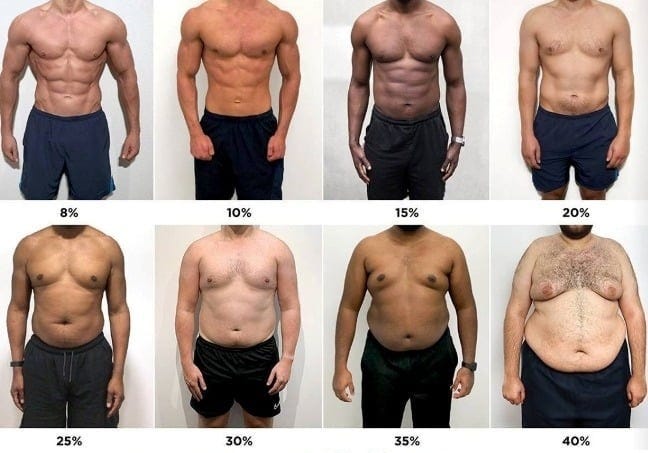Estimating Your Body Fat % Without a DEXA for Visceral Fat
Visceral fat is highly inflammatory but fortunately easy to treat. Knowing your risk of it is easy with this "mirror test".
Welcome to the Healthy Aging Newsletter, a free publication translating trustworthy medical research into simple habits to age well, free of chronic disease. I’m Dr. Ashori, a family medicine doctor turned health coach.
A DEXA scan is by far the easiest way for me to assess my patient’s body composition to know how much lean muscle mass, healthy subcutaneous fat, and the less desirable visceral fat they have. Often called the “mirror test”, it’s surprisingly accurate if you know what to look for.
Why Bother With Body Composition
Truth be told, if my patient feels healthy, has good biomarkers, and is fit, knowing their body composition likely won’t offer much value. At best it’ll confirm what I know about their cardiometabolic function and at worst it’ll give me some false positive results.
From time to time I’ll have a person without much overall fat but for whatever reason they are dealing with quite a bit of visceral fat, often in the form of liver damage. I want to know about that as soon as possible because it’s easy to reverse.
Why The Mirror Test Works
Our bodies tend to store fat in predictable ways. By looking at certain features such as muscle definition, vascularity, and where fat tends to settle, you can make a pretty good estimate.
Quick Visual Guide for Men
10%: Visible abs even when relaxed, veins on arms and maybe lower abs. This person usually will look a bit too lean. Unless serious metabolic dysfunction, visceral fat is quite unlikely.
12–15%: Abdominal muscles outline visible with good lighting/flexing, some definition in arms and shoulders.
18–20%: No clear ab outline, softer look, but muscle shapes still show in the pectorals, delts, and thighs. Beyond this point it’s possible to see visceral fat even if you are more active and eat well.
25%+: Rounder face, less definition overall, waist noticeably wider, more noticeable skin folds. Beyond this point visceral fat is usually present.
Quick Visual Guide for Women
18–20%: Visible muscle tone, faint abdominal muscle outline, some vascularity in arms and legs.
23–25%: Noticeable muscle definition when flexing, but softer midsection. Good lower extremity muscle definition.
28–30%: Minimal muscle separation, softer look overall. Unless quite muscular, muscle outlines are absent.
35%+: Rounder features, no visible definition. This is when visceral fat starts showing up.
Getting The Most Accurate Results
Avoid comparing your photos to social media glam shots. Take a well-lit photo and use reliable photo charts online to guesstimate your fat percentage. As always, this should never be a self-shaming tool but a way to empower yourself and help you with any important health goals.
Use natural light, front-facing, and a relaxed posture. Don’t rely on your memory from your reflection in the mirror. Take photos.
Remember, you can retain water and what you eat will affect your day-to-day look. Take a few photos and track it over time.
What’s The Ideal Body Fat Percentage?
I get this question a lot - in the form of, “What should my body fat percentage be if I do the mirror test or DEXA?” The right answer should always depend on your overall health goals, how you define good quality living, and what your priorities are.
For men, past 25-28% and for women, past 35-40% of body fat the BMI gets past 30 and visceral fat accumulates around organs, limiting their ideal function - think, fatty liver disease.
With high-stress lives, more sedentary jobs, and foods that are more calorie-dense than nutrient-dense it’s easier than ever before to accumulate visceral fat.





Thanks for the visual tool. Looks like I fall somewhere between 20 and 25 percent.
Its very helpful to have a quick no-tool guide like this to get an estimate. Observing and scrutinizing our bodies is not very intuitive despite our increased awareness of body image/health. Thanks for sharing!